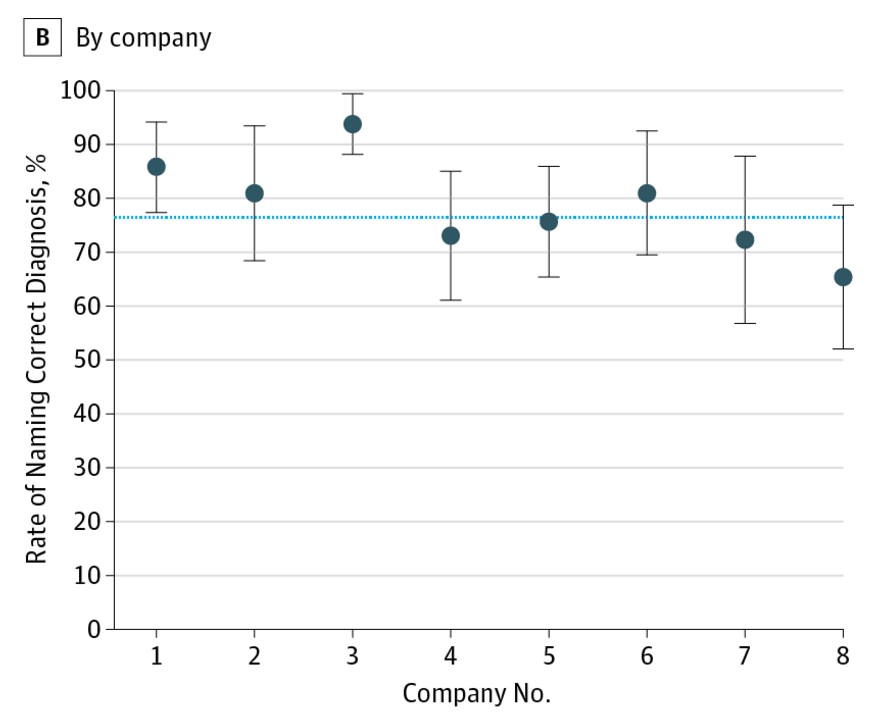 A study of eight leading telemedicine companies shows that, for a number of common conditions, remote video and telephone visits are equally accurate, both are more accurate than webchat, and accuracy of diagnoses and adherence to best practices for in-person care varied greatly from company to company.
A study of eight leading telemedicine companies shows that, for a number of common conditions, remote video and telephone visits are equally accurate, both are more accurate than webchat, and accuracy of diagnoses and adherence to best practices for in-person care varied greatly from company to company.
In the study, published in the Journal of the American Medical Association, UCSF-affiliated researchers had 67 trained patient actors conduct a total of 599 virtual visits for ankle pain, streptococcal pharyngitis, viral pharyngitis, acute rhinosinusitis, low back pain, and recurrent female urinary tract infection. They conducted visits with Ameridoc, Amwell, Consult a Doctor, Doctor on Demand, MDAligne, MDLIVE, MeMD, and NowClinic. The visits were conducted between mid-2013 and mid-2014, which was prior to Teladoc's acquisition of Ameridoc, but after it acquired Consult a Doctor.
The standardized patients recorded what happened during their visits on paper, and researchers compared the doctors' recommendations, diagnoses, and prescriptions with evidence-based standards of care for the conditions in question. In 70 percent of all visits, doctors performed all the recommended examinations and asked all the recommended history questions. In 76 percent of visits, doctors got the right diagnosis. They had the wrong diagnosis in 15 percent of visits and no diagnosis in 9 percent. UTI was diagnosed accurately the most (91 percent of the time) while rhinosinitus was misdiagnosed the most (71 percent of the time).
The researchers did not specify how individual companies fared, but did share the extent of variation between them. The best-performing company had diagnostic accuracy above 90 percent, while the worst had accuracy just under 70 percent. Interestingly, for low back pain, streptococcal pharyngitis, ankle pain, and there was no statistically significant variation among companies. There was significant variation for viral pharyngitis and acute rhinosinusitis.
"The fact that some companies can perform considerably better than others suggests that this variation could be addressed if performance leaders were willing to share their best practices with other virtual visit companies," researchers wrote. "Further research is required to evaluate whether better-performing virtual visit companies have adopted some company-wide policy or protocol(s) that increase guideline adherence."
The study found that antibiotics were prescribed at about the same rate by telemedicine doctors as in-person doctors (based on data from previous studies). One area where telemedicine doctors did diverge from in-person doctors, however, was ordering additional tests. The study found that most doctors followed the guideline of not recommending additional testing for lower back pain, but for ankle pain guidelines say doctors should order radiology imaging. Only 15.5 percent of telemedicine practicioners did so.
"Avoiding additional testing is appropriate in some cases, but the uniformly low rates of testing in the virtual visits may actually reflect the logistical challenges of ordering or following up on tests to be performed near where the patient lives or concern about the out-of-pocket costs for additional testing," researchers wrote. "These hypotheses need to be tested in future studies. Because appropriate use of testing is critical to the delivery of medical care, identification and reduction of barriers to testing will be important."















